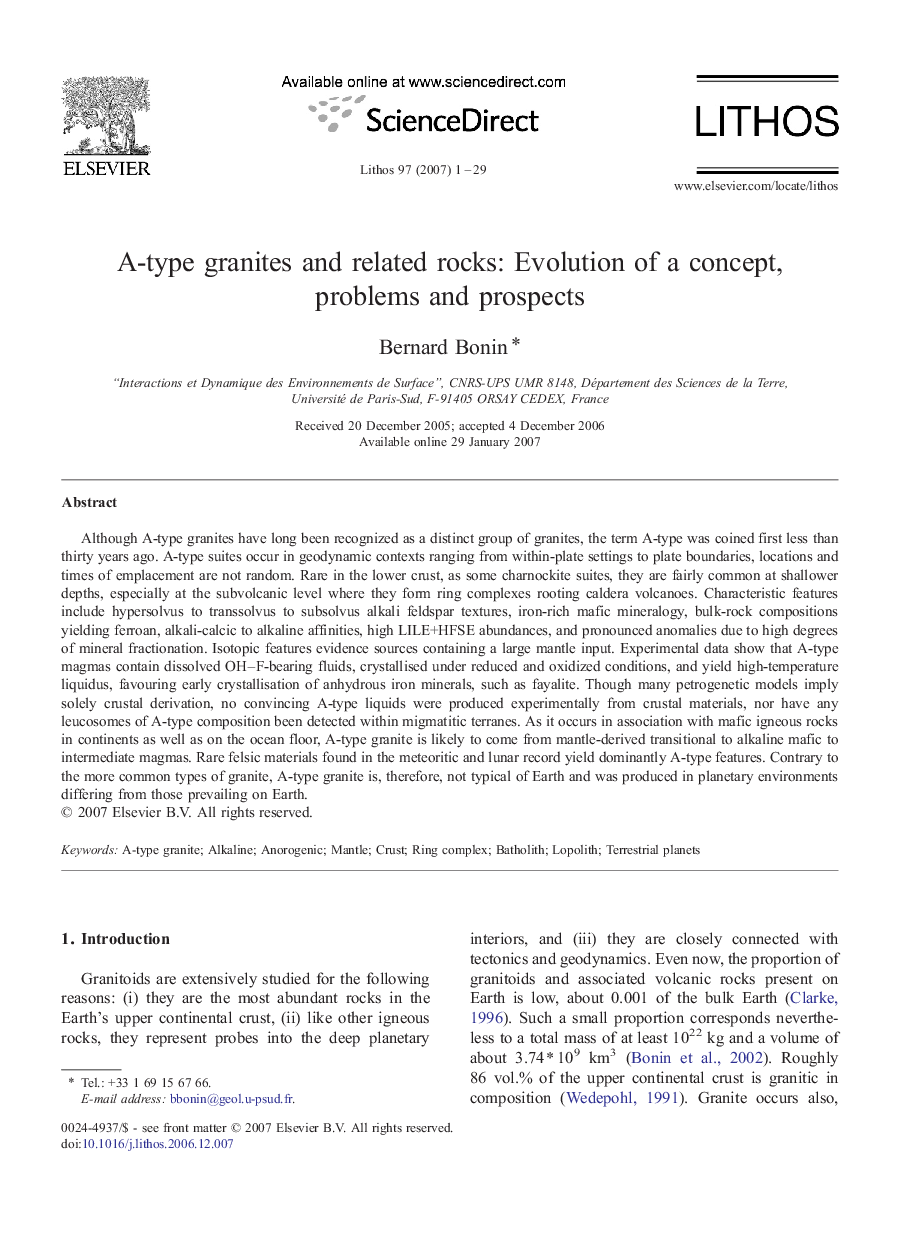| Article ID | Journal | Published Year | Pages | File Type |
|---|---|---|---|---|
| 4717708 | Lithos | 2007 | 29 Pages |
Although A-type granites have long been recognized as a distinct group of granites, the term A-type was coined first less than thirty years ago. A-type suites occur in geodynamic contexts ranging from within-plate settings to plate boundaries, locations and times of emplacement are not random. Rare in the lower crust, as some charnockite suites, they are fairly common at shallower depths, especially at the subvolcanic level where they form ring complexes rooting caldera volcanoes. Characteristic features include hypersolvus to transsolvus to subsolvus alkali feldspar textures, iron-rich mafic mineralogy, bulk-rock compositions yielding ferroan, alkali-calcic to alkaline affinities, high LILE+HFSE abundances, and pronounced anomalies due to high degrees of mineral fractionation. Isotopic features evidence sources containing a large mantle input. Experimental data show that A-type magmas contain dissolved OH–F-bearing fluids, crystallised under reduced and oxidized conditions, and yield high-temperature liquidus, favouring early crystallisation of anhydrous iron minerals, such as fayalite. Though many petrogenetic models imply solely crustal derivation, no convincing A-type liquids were produced experimentally from crustal materials, nor have any leucosomes of A-type composition been detected within migmatitic terranes. As it occurs in association with mafic igneous rocks in continents as well as on the ocean floor, A-type granite is likely to come from mantle-derived transitional to alkaline mafic to intermediate magmas. Rare felsic materials found in the meteoritic and lunar record yield dominantly A-type features. Contrary to the more common types of granite, A-type granite is, therefore, not typical of Earth and was produced in planetary environments differing from those prevailing on Earth.
